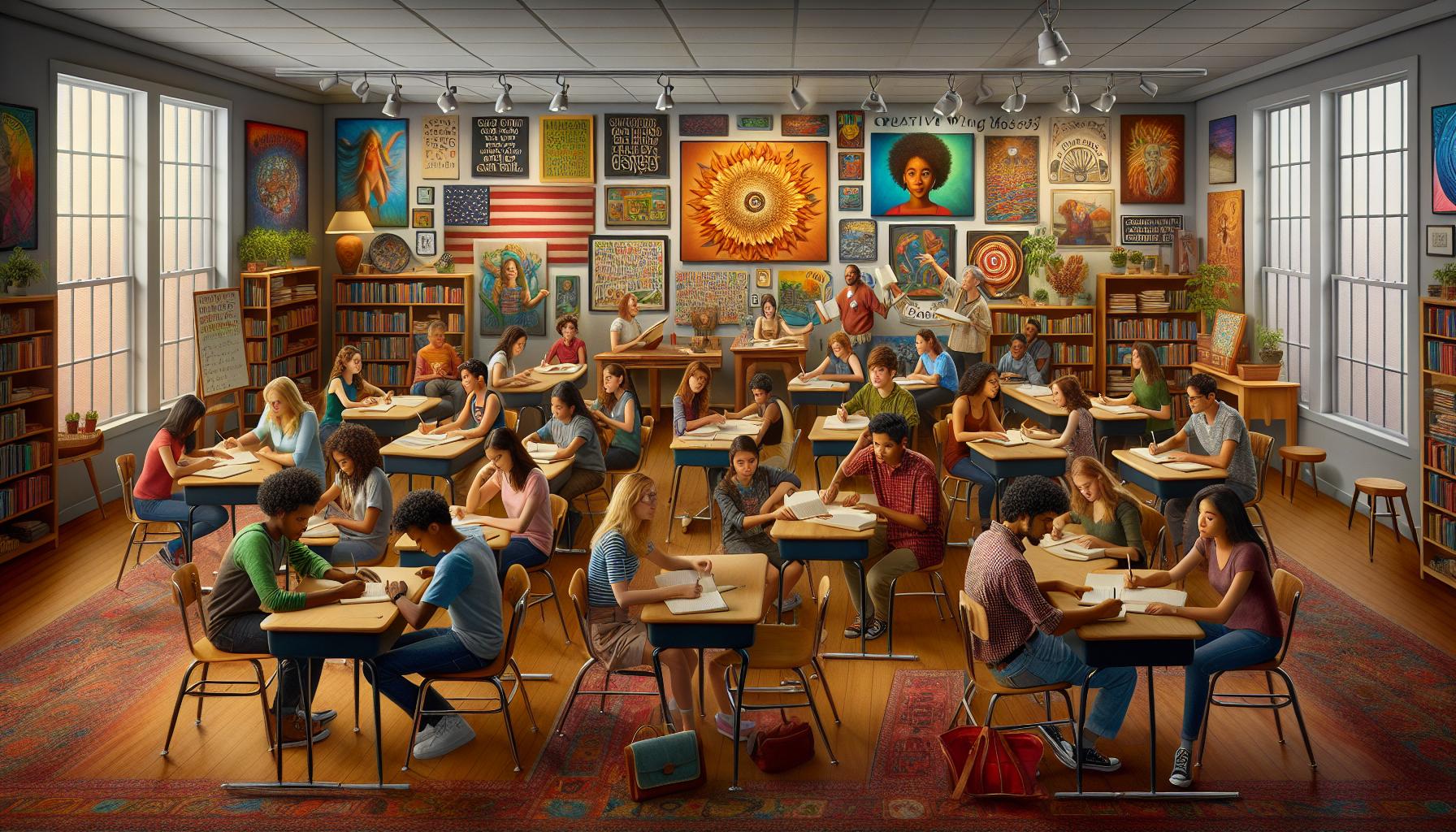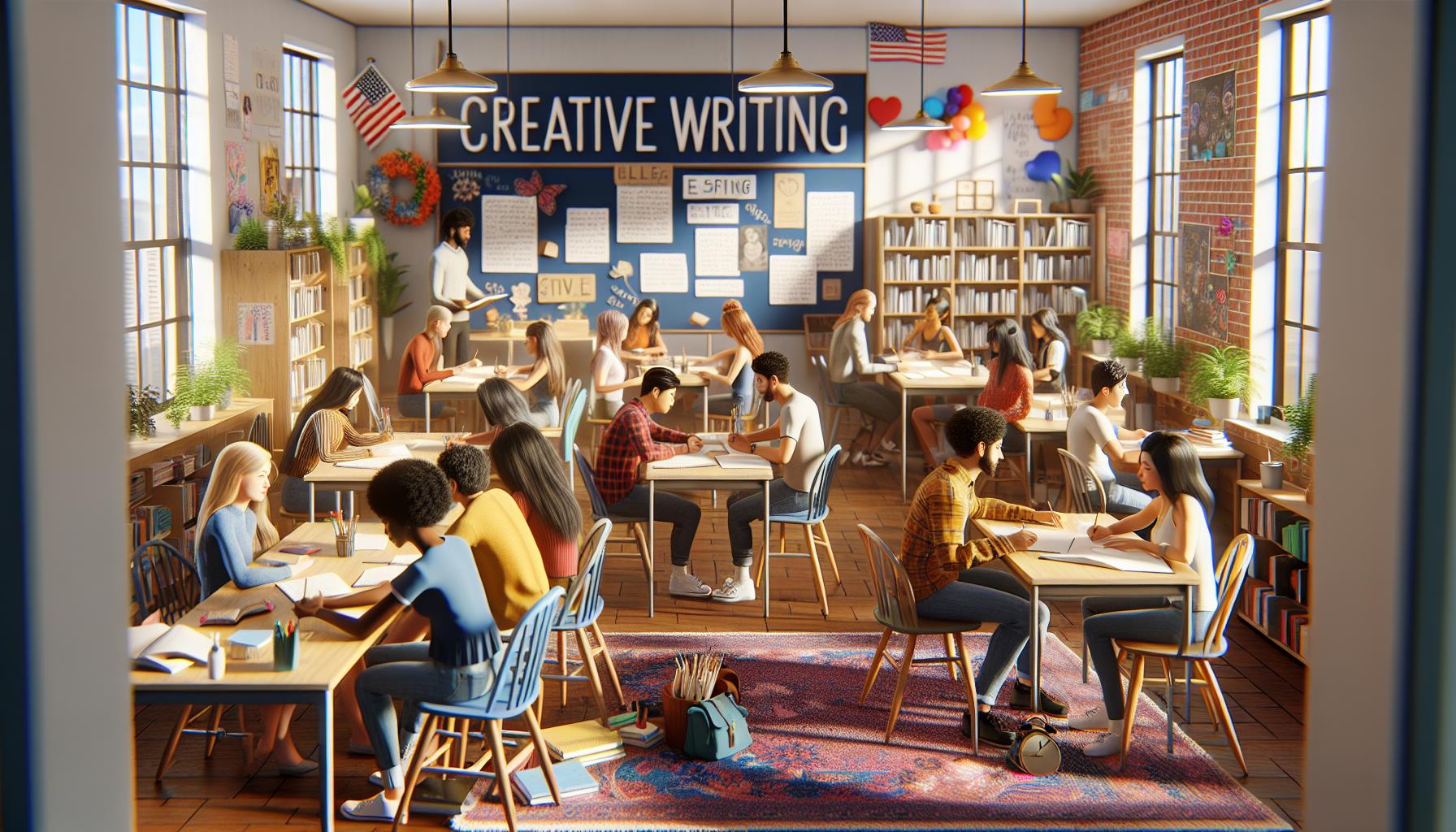Physical Address
304 North Cardinal St.
Dorchester Center, MA 02124
Physical Address
304 North Cardinal St.
Dorchester Center, MA 02124

Creative writing opens doors to imagination and self-expression but teaching it effectively requires more than just assigning random writing prompts. Whether you’re an educator mentoring aspiring authors or a parent nurturing your child’s storytelling abilities the right approach can transform reluctant writers into confident storytellers.
Teaching creative writing isn’t about enforcing rigid rules – it’s about fostering an environment where creativity thrives and words flow naturally. From brainstorming techniques to character development exercises successful writing instruction combines structure with freedom letting students explore their unique voice while mastering essential storytelling elements. Students who develop strong creative writing skills often excel in other subjects too since effective writing enhances critical thinking communication and problem-solving abilities.
Creative writing builds on fundamental principles that blend artistic expression with technical proficiency. These core elements establish a strong foundation for developing writers to express their ideas effectively.
Story structure forms the backbone of creative writing through plot development character creation setting establishment. A compelling narrative includes five key components: exposition rising action climax falling action resolution. Characters drive stories forward through distinct personalities authentic dialogue meaningful conflicts. Setting creates atmosphere through sensory details time period location specifics. Theme development connects readers to universal experiences like love loss redemption growth. Plot pacing maintains reader engagement by alternating between action reflection discovery revelation.
Grammar mastery empowers writers to construct clear compelling sentences. Strong vocabulary enhances description through precise word choice specific nouns active verbs. Sentence variation creates rhythm by combining short declarative statements with complex detailed descriptions. Paragraph structure organizes ideas through topic sentences supporting details smooth transitions. Writing mechanics include proper punctuation consistent tense agreement accurate spelling. Literary devices add depth through metaphors similes personification imagery. Active voice strengthens prose by placing subjects before actions in sentence construction. Show-don’t-tell techniques engage readers through descriptive scenes emotional responses physical reactions.

A creative writing classroom environment impacts student engagement and creative expression. The physical setup and established guidelines create a space where ideas flow freely and students feel confident sharing their work.
Writing spaces thrive on flexibility and comfort. Position desks in clusters of 4-5 students to encourage peer interaction and feedback sessions. Include designated quiet zones with individual desks for focused writing time. Create a reading corner with comfortable seating cushions bean bags where students browse writing examples or share their work. Stock writing supplies in accessible containers: notebooks pens highlighters sticky notes index cards. Display student work word walls writing prompts on bulletin boards to spark inspiration. Incorporate mobile whiteboards or chart paper for brainstorming activities group storytelling sessions.
Writing workshops operate on clear communication protocols. Students participate in daily 5-minute warm-up exercises to transition into creative mode. Writing time spans 20-30 minutes with minimal interruptions. Peer review follows specific feedback formats: 2 strengths 1 area for growth. Students speak using “I noticed” statements when providing feedback. Writers maintain ownership of their work choosing which suggestions to incorporate. Group discussions follow the “popcorn” method where students build on each other’s comments. Workshop sessions end with voluntary sharing opportunities through author’s chair presentations. Time management tools like visual timers help students pace their writing activities.
Creative writing exercises strengthen storytelling abilities through structured practice sessions. These targeted activities develop specific writing skills while encouraging artistic expression.
Free writing activities unlock creative potential through unstructured exploration. Students write continuously for 10-15 minutes without editing or stopping, focusing on raw expression rather than perfection. Morning pages encourage students to fill three pages with stream-of-consciousness writing immediately after waking. Word sprints challenge writers to produce maximum content in 5-minute bursts. Random word generators spark creativity by requiring students to incorporate unexpected terms into their narratives. Timed writing prompts push students to complete short stories within specific timeframes.
Character development exercises create multidimensional personalities that drive compelling narratives. Students craft detailed character profiles including physical traits, personality quirks, fears, desires, background stories. Interview exercises require writers to answer questions as their characters, revealing deeper motivations. Character reaction scenarios present hypothetical situations to explore behavioral patterns. Relationship mapping activities examine connections between multiple characters. Backstory exercises explore pivotal moments that shaped character development before the main narrative begins.
Descriptive writing drills enhance sensory details in storytelling through targeted practice. Students observe real locations for 5 minutes, recording specific sensory details about sights, sounds, smells, textures, tastes. Object studies require detailed descriptions of everyday items using precise vocabulary without naming the object directly. Setting sketches challenge writers to establish atmosphere through environmental details. Emotion portraits convey character feelings through physical manifestations rather than stating emotions directly. Weather exercises practice depicting atmospheric conditions to enhance scene mood.
Effective feedback transforms creative writing from initial drafts into polished work. The feedback process combines structured peer reviews with individualized coaching to help writers identify strengths and areas for improvement.
Peer review sessions operate through small groups of 3-4 students exchanging manuscripts. Each reviewer completes a structured feedback form focusing on specific elements:
Students follow the “sandwich method” of feedback:
Writers remain silent during initial feedback sharing then engage in 5-minute clarifying discussions with reviewers.
Writing coaches conduct 15-minute one-on-one sessions focusing on personalized growth. Key coaching elements include:
Coaches document progress through:
Each coaching session ends with 2-3 concrete revision tasks for the writer to implement.
Creative writing assessment combines objective measurement with subjective appreciation of artistic expression. Effective evaluation techniques track student progress while fostering continued creativity.
Creative writing portfolios document students’ growth through multiple drafts polished pieces over time. Each portfolio contains 8-12 writing samples including poems short stories personal essays fiction drafts. Teachers organize portfolios chronologically with dated entries reflection notes that highlight specific improvements in areas like character development dialogue description. Digital portfolios using platforms like Google Docs enable students to maintain revision histories track changes receive embedded feedback. Students curate their best work selecting pieces that demonstrate mastery of different genres writing techniques.
Creative writing evaluation uses rubrics that balance technical proficiency with artistic merit. A standard rubric allocates points across five key areas: originality (20%) structure (20%) language use (20%) technical accuracy (20%) overall impact (20%). Teachers provide specific comments explaining point allocations in each category. The grading system recognizes both conventional excellence innovative risks that push creative boundaries. Students receive peer evaluations using the same rubric criteria before teacher assessment ensuring comprehensive feedback. Progress tracking focuses on individual growth rather than comparison between students measuring improvement from previous submissions.
| Assessment Component | Weight |
|---|---|
| Originality | 20% |
| Structure | 20% |
| Language Use | 20% |
| Technical Accuracy | 20% |
| Overall Impact | 20% |
Young writers discover their creative potential through targeted inspiration techniques. Cultivating their imagination requires a combination of strategic reading exposure and confidence-building activities.
Reading forms the foundation of creative writing development. Students analyze mentor texts from diverse genres to identify effective storytelling techniques, literary devices and writing styles. Teachers incorporate text discussions that highlight specific elements like character arcs, plot structure and descriptive language. Reading circles allow students to share interpretations and writing insights from their favorite books or passages. Regular exposure to quality literature expands vocabulary, enhances understanding of narrative structure and demonstrates various writing approaches. Teachers select age-appropriate texts that model specific writing skills being taught.
Students strengthen their writing voice through targeted confidence-building activities. Writing prompts that connect to personal experiences encourage authentic expression and emotional investment. Teachers celebrate small writing victories by displaying student work on classroom walls or in digital portfolios. Mini-lessons focus on specific skills, allowing students to master techniques one step at a time. Peer sharing sessions create opportunities for students to receive positive feedback and constructive suggestions. Teachers incorporate writing games and collaborative storytelling exercises to make the creative process enjoyable. Regular writing practice in low-stakes environments helps students overcome anxiety about sharing their work.
Teaching creative writing effectively requires a multifaceted approach that balances structured guidance with artistic freedom. Educators who implement comprehensive strategies – from creating engaging classroom environments to providing constructive feedback – empower students to develop their unique voices.
Success in creative writing instruction comes from understanding that every student has a story to tell. By combining technical skill development practical exercises and thoughtful assessment methods teachers can nurture confident writers who aren’t afraid to explore their creativity.
The journey of teaching creative writing is ongoing but the rewards are evident in students’ growing confidence improved communication skills and enhanced creative expression. When done right creative writing education doesn’t just create better writers – it develops more engaged and imaginative thinkers.